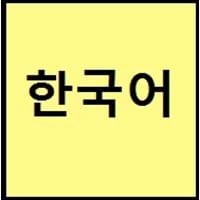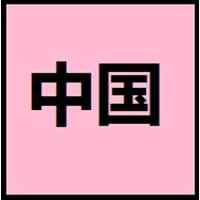Countries
China, Jilin Province, North Korea, South Korea, Yanbian
China, Hong Kong, Macau, Singapore, Taiwan
National Language
North Korea, South Korea
China, Taiwan
Second Language
Not spoken in any of the countries
Republic of Brazil
Speaking Continents
Asia
Asia
Minority Language
Japan, People's Republic of China, Russia, United States of America
Indonesia, Malaysia
Regulated By
The National Institute of the Korean Language
Chinese Language Standardization Council, National Commission on Language and Script Work, Promote Mandarin Council
Interesting Facts
- Korean has borrowed words from English and Chinese.
- Korean has two counting systems. First, is based on Chinese characters and numbers are similar to Chinese numbers, and second counting system is from words unique to Korea.
- Chinese language is tonal, since meaning of a word changes according to its tone.
- In Chinese language, there is no grammatical distinction between singular or plural, no declination of verbs according to tense, mood and aspect.
Similar To
Chinese and Japanese languages
Not Available
Derived From
Not Available
Not Available
Alphabets in
Korean-Alphabets.jpg#200
Chinese.jpg#200
Scripts
Hangul
Chinese Characters and derivatives
Writing Direction
Left-To-Right, Horizontal, Top-To-Bottom
Left-To-Right, Horizontal, Top-To-Bottom
Hello
안녕하세요. (annyeonghaseyo.)
您好 (Nín hǎo)
Thank You
감사합니다 (gamsahabnida)
谢谢 (Xièxiè)
How Are You?
어떻게 지내세요? (eotteohge jinaeseyo?)
你好吗? (Nǐ hǎo ma?)
Good Night
안녕히 주무세요 (annyeonghi jumuseyo)
晚安 (Wǎn'ān)
Good Evening
안녕하세요 (annyeonghaseyo.)
晚上好 (Wǎnshàng hǎo)
Good Afternoon
안녕하십니까 (annyeong hashimnikka)
下午好 (Xiàwǔ hǎo)
Good Morning
안녕히 주무셨어요 (An-yŏng-hi ju-mu-shŏ-ssŏ-yo)
早安 (Zǎo ān)
Please
하십시오 (hasibsio)
请 (Qǐng)
Sorry
죄송합니다 (joesonghabnida)
遗憾 (Yíhàn)
Bye
안녕 (annyeong)
再见 (Zàijiàn)
I Love You
당신을 사랑합니다 (dangsin-eul salanghabnida)
我爱你 (Wǒ ài nǐ)
Excuse Me
실례합니다 (sillyehabnida)
劳驾 (Láojià)
Where They Speak
South Korea
China, Malaysia, Singapore, Taiwan
Where They Speak
South Korea
China, United States of America
Where They Speak
China, North Korea
China, Malaysia, Singapore, Vietnam
How Many People Speak
Not Available
Second Language Speakers
Not Available
Native Name
한국어 (조선말)
中文 (zhōngwén)
Alternative Names
Hanguk Mal, Hanguk Uh
Not Available
French Name
coréen
chinois
German Name
Koreanisch
Chinesisch
Pronunciation
Not Available
Not Available
Origin
Before 1st century
1250 BC
Language Family
Koreanic Family
Sino-Tibetan Family
Subgroup
Not Available
Not Available
Branch
Not Available
Not Available
Early Forms
Old Korean, Middle Korean and Korean
No early forms
Standard Forms
Pluricentric Standard Korean, South Korean standard and North Korean standard
Standard Chinese
Signed Forms
Korean Sign Language
Wenfa Shouyu 文法手語 ("Grammatical Sign Language", Signed Mandarin (Taiwan))
Scope
Individual
Individual
ISO 639 6
Not Available
Not Available
Glottocode
kore1280
sini1245
Linguasphere
45-AAA
79-AAA
Language Type
Living
Living
Language Linguistic Typology
Subject-Object-Verb
Subject-Verb-Object
Language Morphological Typology
Agglutinative
Analytic, Isolating
All Korean and Chinese Dialects
Most languages have dialects where each dialect differ from other dialect with respect to grammar and vocabulary. Here you will get to know all Korean and Chinese dialects. Various dialects of Korean and Chinese language differ in their pronunciations and words. Dialects of Korean are spoken in different Korean Speaking Countries whereas Chinese Dialects are spoken in different Chinese speaking countries. Also the number of people speaking Korean vs Chinese Dialects varies from few thousands to many millions. Some of the Korean dialects include: Jeju, Gyeongsang. Chinese dialects include: Mandarin , Wu. Also learn about dialects in South American Languages and North American Languages.
Korean and Chinese Speaking population
Korean and Chinese speaking population is one of the factors based on which Korean and Chinese languages can be compared. The total count of Korean and Chinese Speaking population in percentage is also given. The percentage of people speaking Korean language is 1.14 % whereas the percentage of people speaking Chinese language is 16.00 %. When we compare the speaking population of any two languages we get to know which of two languages is more popular. Find more details about how many people speak Korean and Chinese on Korean vs Chinese where you will get native speakers, speaking population in percentage and native names.
Korean and Chinese Language Codes
Korean and Chinese language codes are used in those applications where using language names are tedious. Korean and Chinese Language Codes include all the international language codes, glottocodes and linguasphere.





